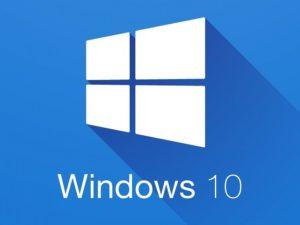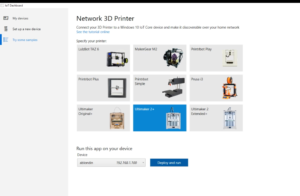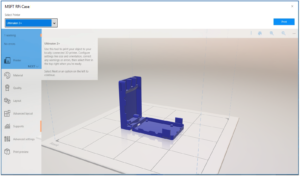 Microsoft Windows has always been an early supporter of 3D printing, not only developing their own 3D printing app, but offering native 3D printer support for a bunch of 3D printer models since Windows 8.1. Unfortunately the support does require the printer to be connected via a USB device, which is common but leaves 3D printer owners not able to access many of Windows’ robust networking features. However it looks like that is about to change with this week’s release of the new Windows 10 IoT Core app that will allow 3D printer users to network their 3D printer and allow it to be operated and monitored from any connected Windows PC just like any other piece of hardware.
Microsoft Windows has always been an early supporter of 3D printing, not only developing their own 3D printing app, but offering native 3D printer support for a bunch of 3D printer models since Windows 8.1. Unfortunately the support does require the printer to be connected via a USB device, which is common but leaves 3D printer owners not able to access many of Windows’ robust networking features. However it looks like that is about to change with this week’s release of the new Windows 10 IoT Core app that will allow 3D printer users to network their 3D printer and allow it to be operated and monitored from any connected Windows PC just like any other piece of hardware.
Networked devices like 2D printers and 2D scanners are commonplace in both the home and workplace, and at this point the functionality is built into just about every piece of office equipment that you can imagine. But the newest, and likely most important, emerging trend in technology is connectivity via the Internet of Things. Everything from your computer to your television to your refrigerator and even your lights are able to talk to each other. In the home of the future, everything will be able to speak to everything, and everything can be accessed and controlled from a computer, so it makes sense that at some point Microsoft would get around to allowing 3D printers to be networked.
There is a catch, unfortunately; so far the Windows 10 IoT Core app is essentially in a sort of beta phase and currently only available using a Raspberry Pi to connect the 3D printer to a wireless network. So unless you’re a Raspberry Pi enthusiast you may have to wait for a while before you can start a new 3D print from a computer in the other room, but eventually the functionality is likely to become native. Microsoft developed the app and the Raspberry Pi connectivity to encourage 3D printer manufacturers to explore the possibilities of including native Windows WiFi connectivity in their printers.
If you’re not sure how to use a Raspberry Pi, it is actually pretty easy and Microsoft has even included an easy to understand tutorial to help anyone new to the device get connected. Once the Network 3D Printer UWP app is up and running on your Windows 10 IoT Core device, it broadcasts its presence on the network just like any other device would. That means anyone on the network can add the 3D printer using basic Windows 10 Settings, even multiple devices will be able to access the 3D printer provided they have a 3D printing program installed on that device.
You can even 3D print a custom case for your Raspberry Pi if you use Microsoft 3D Builder. This is the networking app that small businesses that use 3D printers have been waiting for.
Here is a video explaining the new Windows 10 IoT Core App:
The Windows 10 IoT Core app includes native support for thirteen 3D printers, including the entire line of Ultimaker 3D printers, the new LulzBot TAZ 6, the Printrbot Play, Plus and Simple, Makergear M2 and the Prusa i3 and i3 Mk2. Microsoft is also looking to the 3D printing community to suggest additional models of 3D printers to add natively and they have encouraged anyone to semail them. You can read more about the new IoT Core app and 3D printing here. Discuss further in the Microsoft 3D Printing Networking App forum over at 3DPB.com.
Subscribe to Our Email Newsletter
Stay up-to-date on all the latest news from the 3D printing industry and receive information and offers from third party vendors.
You May Also Like
Precision at the Microscale: UK Researchers Advance Medical Devices with BMF’s 3D Printing Tech
University of Nottingham researchers are using Boston Micro Fabrication‘s (BMF) 3D printing technology to develop medical devices that improve compatibility with human tissue. Funded by a UK grant, this project...
3D Printing Webinar and Event Roundup: April 21, 2024
It’s another busy week of webinars and events, starting with Hannover Messe in Germany and continuing with Metalcasting Congress, Chinaplas, TechBlick’s Innovation Festival, and more. Stratasys continues its advanced training...
3D Printing Webinar and Event Roundup: March 17, 2024
It’s another busy week of webinars and events, including SALMED 2024 and AM Forum in Berlin. Stratasys continues its in-person training and is offering two webinars, ASTM is holding a...
3D Printed Micro Antenna is 15% Smaller and 6X Lighter
Horizon Microtechnologies has achieved success in creating a high-frequency D-Band horn antenna through micro 3D printing. However, this achievement did not rely solely on 3D printing; it involved a combination...
































